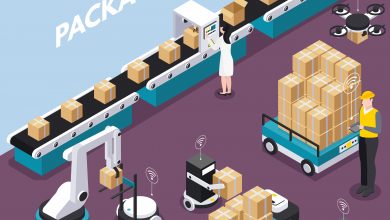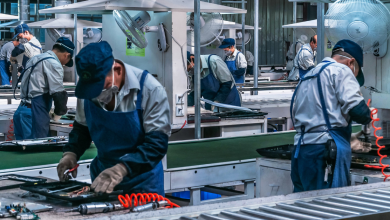The Future of Food Packaging: Trends and Innovations in the Industry
The food packaging industry is undergoing significant transformation, influenced by evolving consumer demands, sustainability initiatives, and technological innovations. With sustainability becoming a priority and innovations reshaping how food is stored and presented, food packaging is no longer just about containing products, it’s about extending shelf life, reducing waste, and creating an engaging customer experience. In this blog, we’ll explore key trends and innovations that are shaping the future of food packaging.
1. Sustainable Packaging Solutions
Environmental concerns have led to a global push toward sustainable packaging solutions. Consumers and companies alike are seeking ways to reduce the environmental footprint of packaging, which has resulted in several key innovations:
- Biodegradable and Compostable Materials: Packaging made from plant-based materials such as cornstarch, seaweed, or bagasse (sugarcane fiber) is growing in popularity. These materials break down more easily in natural environments compared to traditional plastics.
- Recyclable Packaging: Efforts to make packaging fully recyclable are increasing, with companies producing high-quality products setting ambitious goals to move toward 100% recyclable packaging materials.
- Minimalistic and Zero-Waste Packaging: Brands are opting for minimalistic designs with reduced packaging materials, and in some cases, eliminating packaging by using innovative delivery systems like reusable containers.
These shifts are not only helping companies reduce their carbon footprint but also appealing to eco-conscious consumers.
2. Smart Packaging and IoT Integration
The integration of technology into packaging, known as smart packaging, is gaining momentum in the food industry. Smart packaging provides a higher level of interaction between the product and the consumer through features such as:
- QR Codes and Augmented Reality (AR): QR codes printed on food packaging can be scanned to provide consumers with detailed information about the product’s origin, ingredients, nutritional information, and even suggested recipes. Some brands are leveraging AR technology to create immersive experiences for consumers, allowing them to engage with the brand directly through their mobile devices.
- Temperature Indicators and Freshness Sensors: Smart labels embedded with sensors can monitor the condition of the food inside the package. For instance, color-changing labels can indicate whether a product has been stored at the right temperature or if it has started to spoil. This helps consumers avoid food waste and ensures they’re consuming safe products.
- Track and Trace Technology: Blockchain and IoT technologies are being used to improve food safety by enabling real-time tracking of products throughout the supply chain. This helps companies respond quickly to any recalls and ensures that consumers know the exact source and journey of their food.
3. Active Packaging
Active packaging goes beyond simply containing food, it interacts with the food to maintain freshness and quality for longer periods. This is achieved through the incorporation of:
- Oxygen Absorbers: These components are added to packaging to extend the shelf life of perishable goods by reducing oxygen levels inside the packaging. Lower oxygen levels help prevent oxidation, spoilage, and the growth of bacteria.
- Moisture Control Systems: Some packaging includes moisture control mechanisms to maintain the right humidity levels, particularly in products like baked goods or fresh produce. By managing moisture, food stays fresher for longer without the need for preservatives.
- Antimicrobial Films: These films contain substances that inhibit the growth of bacteria and other microorganisms. Such innovations are particularly valuable for packaging fresh meats and seafood, where spoilage can occur quickly.
4. Personalized and Customizable Packaging
As consumers seek more personalized experiences, packaging is becoming a tool for customization and interaction. Brands are using packaging to serve individual preferences by:
- Limited Edition Packaging: Brands are producing packaging that features unique designs, seasonal themes, or partnerships with artists, which encourages collectors and increases brand loyalty.
- Customizable Labels: With advancements in digital printing, companies can create packaging that reflects consumer choices.
5. Edible Packaging
Edible packaging is one of the most exciting innovations in the food packaging industry. It involves packaging that can be consumed along with the food product, offering a waste-free solution. Edible films made from ingredients like rice, seaweed, and potato starch are being developed for a variety of applications, particularly for single-serving items.
Although still in its early stages, edible packaging holds promise for reducing waste and simplifying the consumption of packaged goods, especially in fast food and snack industries.
The Future of Food Packaging: A Blend of Innovation and Responsibility
As these trends demonstrate, the future of food packaging is about more than just aesthetics, it’s about functionality, sustainability, and consumer experience. The innovations we’re seeing today are paving the way for packaging that not only protects food but also enhances the consumer journey and meets global sustainability goals.
“Ready to advance your food packaging with innovative solutions? Contact Sama Bangladesh today to explore our advanced packaging machinery designed for the food industry.”



